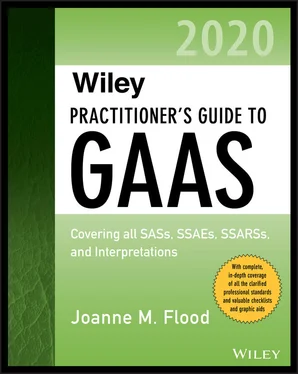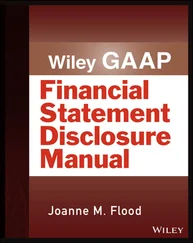The nature of the control relationships between a parent and its components that determine how the group is to be consolidated
The extent to which components are audited by other auditors
The nature of the business divisions to be audited, including the need for specialized knowledge
The reporting currency to be used, including any need for currency translation for the audited financial information
The need for statutory or regulatory audit requirements (for example, OMB Circular A- 133, Audits of States, Local Governments, and Nonprofit Organizations)
The availability of the work of the internal auditor function and the extent of the auditor’s potential direct use of such work
The entity’s use of service organizations and how the auditor may obtain evidence concerning the design or operation of controls performed by them
The expected use of audit evidence obtained in previous audits (for example, audit evidence related to risk assessment procedures and tests of controls)
The effect of IT on the audit procedures, including the availability of data and the expected use of computer-assisted audit techniques
The coordination of the expected coverage and timing of the audit work with any reviews of interim financial information, and the effect on the audit of the information obtained during such reviews
The availability of client personnel and data
Reporting Objectives, Timing of the Audit, and Nature of Communications
The following examples illustrate reporting objectives, timing of the audit, and nature of communications:
The entity’s timetable for reporting, including interim periods
The organization of meetings with management and those charged with governance to discuss the nature, timing, and extent of the audit work
The discussion with management and those charged with governance regarding the expected type and timing of reports to be issued and other communications, both written and oral, including the auditor’s report, management letters, and communications to those charged with governance
The discussion with management regarding the expected communications on the status of audit work throughout the engagement
Communication with auditors of components regarding the expected types and timing of reports to be issued and other communications in connection with the audit of components
The expected nature and timing of communications among engagement team members, including the nature and timing of team meetings and timing of the review of work performed
Whether there are any other expected communications with third parties, including any statutory or contractual reporting responsibilities arising from the audit
Significant Factors, Preliminary Engagement Activities, and Knowledge Gained on Other Engagements
The following examples illustrate significant factors, preliminary engagement activities, and knowledge gained on other engagements:
The determination of materiality, in accordance with AU-C Section 320, Materiality in Planning and Performing an Audit, and, when applicable, the following:The determination of materiality for components and communication thereof to component auditors in accordance with AU-C Section 600, Special Considerations—Audits of Group Financial Statements (Including the Work of Component Auditors)The preliminary identification of significant components and material classes of transactions, account balances, and disclosures
Preliminary identification of areas in which there may be a higher risk of material misstatement
The effect of the assessed risk of material misstatement at the overall financial statement level on direction, supervision, and review
The manner in which the auditor emphasizes to engagement team members the need to maintain a questioning mind and exercise professional skepticism in gathering and evaluating audit evidence
Results of previous audits that involved evaluating the operating effectiveness of internal control, including the nature of identified deficiencies and action taken to address them
The discussion of matters that may affect the audit with firm personnel responsible for performing other services to the entity
Evidence of management’s commitment to the design, implementation, and maintenance of sound internal control, including evidence of appropriate documentation of such internal control
Volume of transactions, which may determine whether it is more efficient for the auditor to rely on internal control
Importance attached to internal control throughout the entity to the successful operation of the business
Significant business developments affecting the entity, including changes in IT and business processes; changes in key management; and acquisitions, mergers, and divestments
Significant industry developments, such as changes in industry regulations and new reporting requirements
Significant changes in the financial reporting framework, such as changes in accounting standards
Other significant relevant developments, such as changes in the legal environment affecting the entity
Nature, Timing, and Extent of Resources
The following examples illustrate the nature, timing, and extent of resources:
The selection of the engagement team (including, when necessary, the engagement quality control reviewer; see AU-C Section 220, Quality Control for an Engagement Conducted in Accordance with Generally Accepted Auditing Standards) and the assignment of audit work to the team members, including the assignment of appropriately experienced team members to areas in which there may be higher risks of material misstatement.
Engagement budgeting, including considering the appropriate amount of time to set aside for areas in which there may be higher risks of material misstatement.
10 AU-C 315 Understanding the Entity and Its Environment and Assessing the Risks of Material Misstatement
Scope
Technical Alert
Definitions of Terms
Objective of AU-C Section 315
Overview
Requirements
Step 1. Perform Risk Assessment Procedures
Step 2. Identification of Significant Risks
Step 3. Assessing the Risk of Material Misstatement
Documentation
Examples of Matters to Consider When Obtaining an Understanding of the Entity and Its Environment
The Economy
The Client’s Industry
The Client’s Business: New Client
The Client’s Business: Continuing Client
Using a Risk-Based, Top-Down Approach to Evaluate Internal Control
Effect of IT on Internal Control
AU-C 315 Illustrations
AU-C 315 provides guidance for the auditor to identify and assess the risks of material misstatements. The auditor does this by achieving an understanding the entity and its environment, including internal control. (AU-C 315.01)
Through the AICPA’s initiative on Enhancing Audit Quality (EAQ), data surfaced that indicated firms often fail to perform appropriate risk assessments and link those risk assessments to their audit procedures in compliance with AU-C Section 315 and AU-C Section 330. As a result, the AICPA Peer Review Board has developed stronger, more precise guidance. The Peer Review Board in its September 2018 Alert, as clarified in October 2018, announced an updated focus on risk assessment documentation and a new section in the Peer Review Manual, Evaluation of Non-Compliance with the Risk Assessment Standards. This new guidance is effective for peer reviews scheduled from October 2018 through September 2021. 1
The Alert emphasizes that reviewers should be alert to these areas of common non-compliance:
Читать дальше












